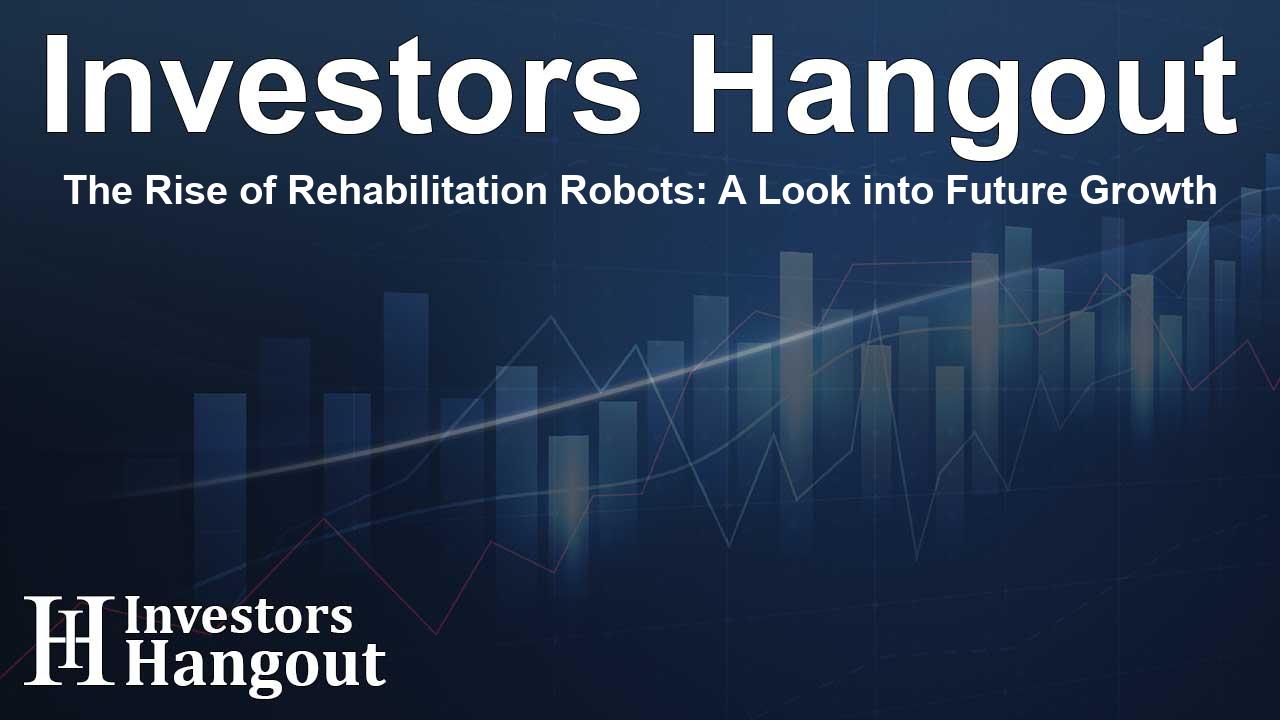The Rise of Rehabilitation Robots: A Look into Future Growth

Exploring the Future of Rehabilitation Robots Market
The Rehabilitation Robots Market is experiencing remarkable growth and is set to reach USD 1.33 billion by 2032, expanding at a compound annual growth rate (CAGR) of 18.76%. This rapid development is largely driven by an increase in disabilities and neurological disorders such as strokes and spinal cord injuries. With more people seeking rehabilitation, the demand for advanced robotic solutions is surging.
Market Drivers and Technological Innovations
One of the remarkable aspects propelling the Rehabilitation Robots Market is the rise in the global incidence of disabilities. According to reports, over 2.4 billion people worldwide suffer from health conditions that can benefit immensely from rehabilitation. Innovations in AI-based robotic systems, alongside heightened investment in healthcare infrastructure, are creating efficient rehabilitation processes. These advancements not only reduce caregiver workload but also enhance recovery outcomes for patients.
The Growing U.S. Market
In the United States, the Rehabilitation Robots Market is rapidly accelerating. It was valued at USD 93.18 million in 2023, projected to reach approximately USD 459.2 million by 2032, with an impressive CAGR of 18.97%. The increasing need for rehabilitation services among veterans, coupled with private rehabilitation centers catering to an aging population, drives this market. Government initiatives supporting the integration of robotic technologies in rehabilitation add a significant boost.
Key Players Leading the Industry
Several key players are transforming the Rehabilitation Robots Market:
- Hocoma AG, offering products like the Lokomat Gait Training Robot.
- Ekso Bionics Holdings, Inc. with innovative solutions such as the EksoNR Neurorehabilitation Exoskeleton.
- ReWalk Robotics and their personal exoskeletons aimed at assisting stroke recovery.
- Cyberdyne Inc., known for its HAL Hybrid Assistive Limbs.
- Bionik Laboratories Corp. with their InMotion devices focusing on stroke rehabilitation.
Segment Analysis of Rehabilitation Robots
Types of Rehabilitation Robots
The largest segment, exoskeletons, significantly contributes to rehabilitation markets. These innovative devices assist users in gait training and lower limb support, which is crucial for stroke recovery and rehabilitation in geriatric cases. Exoskeletons are designed to mimic natural human movements, restoring the ability to walk effectively.
End-Use Facilities Utilizing Rehabilitation Robots
In 2023, hospitals and clinics accounted for 45% of the global demand for rehabilitation robots. These facilities provide rigorous therapy environments that rely heavily on robotic assistance for treatable conditions like strokes and orthopedic injuries. Not only do they enhance patient throughput, but they also provide measurable outcomes for rehabilitation efforts. The competitive landscape is further intensified with multispecialty hospitals establishing dedicated rehabilitation facilities equipped with advanced robotic technology.
Regional Market Growth Dynamics
North America leads the global Rehabilitation Robots Market with around 44% share in total revenue, driven by robust healthcare frameworks and investments in rehabilitation tech. Significant government initiatives, including Medicare reimbursement for rehab services, further enhance this region's advantage. Conversely, Asia Pacific is on the rise, with countries like Japan and China investing heavily in healthcare automation and eldercare solutions. Japan's implementation of robotic exoskeletons in care settings reflects innovation aimed at tackling age-related mobility challenges.
Recent Developments Shaping the Future
- Ekso Bionics has recently unveiled EksoNR 2.0, showcasing advancements in neurorehabilitation technology.
- Harmonic Bionics launched its FDA-registered Harmony SHR robotic rehabilitation system.
- Bionik Laboratories secured a patent for a next-gen upper-extremity rehabilitation device.
Frequently Asked Questions
What is the projected growth rate of the Rehabilitation Robots Market?
The market is expected to grow at a CAGR of 18.76% from 2024 to 2032, reaching USD 1.33 billion by 2032.
Which key players are transforming the rehabilitation robotics field?
Major contributors include Hocoma AG, Ekso Bionics, and ReWalk Robotics, among others.
What drives the demand for rehabilitation robots in the U.S.?
Increased need for rehabilitation among veterans and an aging population are primary drivers.
What types of rehabilitation robots are most prevalent?
Exoskeletons and therapy robots are the leading types within the market.
How are regional markets evolving in rehabilitation robotics?
North America holds the largest share, while Asia Pacific is witnessing rapid growth due to investments in automation and eldercare.
About The Author
Contact Henry Turner privately here. Or send an email with ATTN: Henry Turner as the subject to contact@investorshangout.com.
About Investors Hangout
Investors Hangout is a leading online stock forum for financial discussion and learning, offering a wide range of free tools and resources. It draws in traders of all levels, who exchange market knowledge, investigate trading tactics, and keep an eye on industry developments in real time. Featuring financial articles, stock message boards, quotes, charts, company profiles, and live news updates. Through cooperative learning and a wealth of informational resources, it helps users from novices creating their first portfolios to experts honing their techniques. Join Investors Hangout today: https://investorshangout.com/
The content of this article is based on factual, publicly available information and does not represent legal, financial, or investment advice. Investors Hangout does not offer financial advice, and the author is not a licensed financial advisor. Consult a qualified advisor before making any financial or investment decisions based on this article. This article should not be considered advice to purchase, sell, or hold any securities or other investments. If any of the material provided here is inaccurate, please contact us for corrections.
